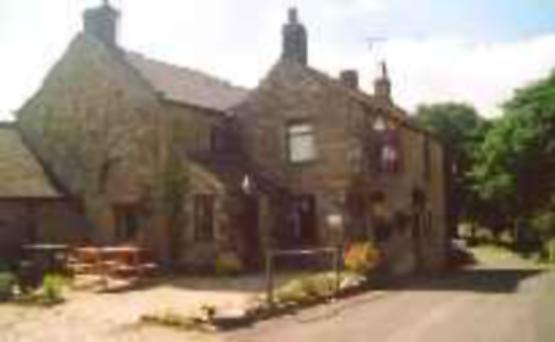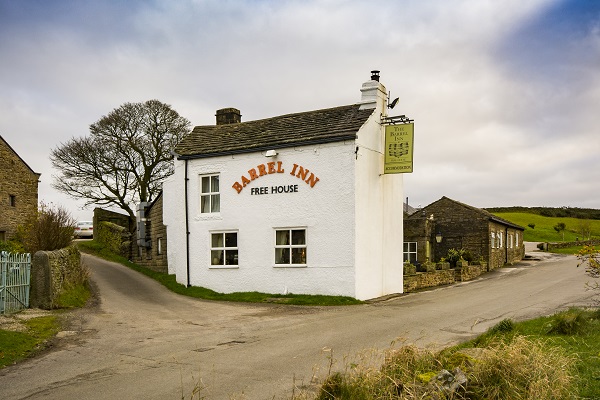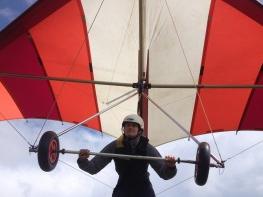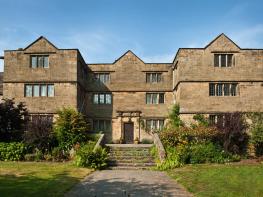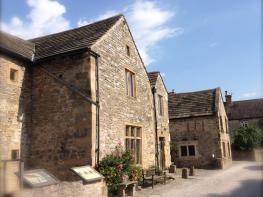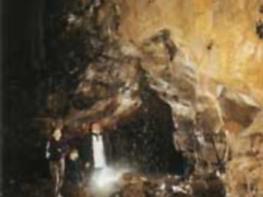Set within 60 acres of stunning grounds within the heart of the Peak District, YHA Ravenstor…
Tideswell and Millers Dale

The dark Satanic mills have been cleaned up and lovely limestone valleys surround them
7 miles (11.3kms)
About the walk
It’s all quiet in Millers Dale these days, but it wasn’t always so. Many early industrialists wanted to build their cotton mills in the countryside, far away from the marauding Luddites of the city. The Wye and its tributaries had the power to work these mills. The railway followed, and that brought more industry with it. And so little Millers Dale and its neighbours joined the Industrial Revolution. The walk starts in Tideswell Dale. Nowadays it’s choked with thickets and herbs but they hide a history of quarrying and mining for basalt.
Cruelty at the mill
Memoir of Robert Blincoe, written in 1863, tells of the cruelty to child apprentices at Litton Mill. The owner, Ellis Needham, brought children from the poorhouses of London, many of whom died and were buried in the churchyards of Tideswell and Taddington. It is said that ghosts of some of the apprentices still make appearances in or around the mill. It eventually fell into a derelict state and after lying damp and neglected for many years, has now found a new lease of life as apartments.
The walk emerges from the shadows of the mill into Water-cum-Jolly. At first the river is lined by mudbanks thick with rushes and common horsetail. The river widens out and, at the same time, impressive limestone cliffs squeeze the path. The river’s widening is artificial, a result of it being controlled to form a head of water for the downstream mill. Once a new hydroelectric scheme is complete it will be providing power once again. Round the next corner is Cressbrook Mill, built by Sir Richard Arkwright, but taken over by William Newton. Newton also employed child labour but was said to have treated them well. The rooftop bell tower would have peeled to beckon the apprentices, who lived next door, to the works. Like Litton, this impressive Georgian mill was allowed to moulder, but has since been restored as flats. The walk leaves the banks of the Wye at Cressbrook to take in pretty Cressbrook Dale. In this nature reserve you’ll see lily of the valley, wild garlic and bloody cranesbill. Just as you think you’ve found your true rural retreat you’ll climb to the rim of the dale, look across it and see the grassed-over spoil heaps of lead mines. Finally, the ancient strip fields of Litton form a mosaic of pasture and dry-stone walls on the return route.
Walk directions
Follow the path southwards from beside the car park toilet block into Tideswell Dale. At a gate, stay on the main tarmac path, then fork right across a little bridge.
Turn left on to a tarmac road, which runs along Millers Dale to Litton Mill. A concession path leads down the mill driveway and past the mill. Swing right past the Old Gas House then left over the tail race, then follow the River Wye as it meanders through the tight, steep-sided dale.
The river eventually widens out at Water-cum-Jolly, the path tracing a wall of limestone cliffs. Cross the footbridge, then turn left immediately before the mill and out to the road. If flooded, a narrow signed concession path climbs steeply out before the pool then below Cressbrook Hall to the lane.
Turn left along the road, then fork right, climbing steadily into Cressbrook Dale. At a hairpin bend, take a track going straight ahead into the woods. Ignore a side turn left, and go through a gate into a clearing high above the stream. Follow the path downhill, forking left at the bottom to a footbridge. At a second small patch of shady woodland, fork right; this path climbs high up the valley side then emerges from the trees.
Fork left at a gate and down a grassy path to the dale bottom. Go right to a footbridge, cross the (often dry) stream and rise up into Tansley Dale.
At the head of the dale, the path curves right to climb beside a wall, then goes left through a gate. Bear right across an elongated field, then over a stile to meet a rough vehicle track, just south of Litton.
Fork left on this, pass a large barn, then turn left along a country lane. At the next bend left, squeeze through a stile ahead. Follow the edge of a few fields, bend left beside a fence, then right to a lane. A stile opposite marks a path going straight down the field to a lane by Dale House. Go left and then take the first right on to a narrow lane marked ‘unsuitable for motors’, turning right at the far end into Tideswell.
After looking around the village, head south down the main street, then fork right at The Horse and Jockey pub. Cross over a lane on to a stony track past workshops. Fork left at two gates in fairly quick succession; the footpath then tracks above the main road, before descending to meet it. Turn left, then take the first gate on the right across the road. Follow the path downhill back to the car park.
Additional information
Generally well-defined paths and tracks, path at Water-cum-Jolly liable to flooding, limestone slippery and some paths muddy when wet, a few stiles towards the end
Limestone dales, shady woodland
Dogs should be kept on lead, and should be kept out of the River Wye to protect endangered water voles.
OS Explorer OL24 Peak District – White Peak Area
Tideswell Dale pay car park
At car park and Tideswell village
WALKING IN SAFETY
Read our tips to look after yourself and the environment when following this walk.
Find out more
Also in the area
About the area
Discover Derbyshire
The natural features of this central English county range from the modest heights of the Peak District National Park, where Kinder Scout stands at 2,088 ft (636 m), to the depths of its remarkable underground caverns, floodlit to reveal exquisite Blue John stone. Walkers and cyclists will enjoy the High Peak Trail which extends from the Derwent Valley to the limestone plateau near Buxton, and for many, the spectacular scenery is what draws them to the area.
The county is well endowed with stately homes – most notably Chatsworth, the palatial home of the Duke and Duchess of Devonshire, with its outstanding collections of paintings, statuary and art. Other gems include the well preserved medieval Haddon Hall, the Elizabethan Hardwick Hall, and Kedleston Hall, whose entrance front has been described as the grandest Palladian façade in Britain.
The spa town of Matlock is the county’s administrative centre and other major towns of interest include Derby and the old coal mining town of Chesterfield, with its crooked spire. Around the villages of Derbyshire, look out for the ancient tradition of well dressing, the decorating of springs and wells – the precious sources of life-sustaining water – with pictures formed from flowers.
Nearby stays
Restaurants and Pubs
Nearby experiences
Recommended things to do
Why choose Rated Trips?
Your trusted guide to rated places across the UK
The best coverage
Discover more than 15,000 professionally rated places to stay, eat and visit from across the UK and Ireland.
Quality assured
Choose a place to stay safe in the knowledge that it has been expertly assessed by trained assessors.
Plan your next trip
Search by location or the type of place you're visiting to find your next ideal holiday experience.
Travel inspiration
Read our articles, city guides and recommended things to do for inspiration. We're here to help you explore the UK.


